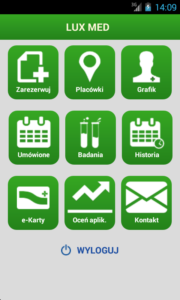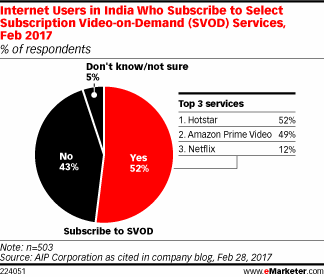
Mobile medicine on the offensive!
Mobile medicine on the offensive!
The healthcare sector is an area where the need to help intersects with the desire to reduce expenses. A favorable economic calculus is desirable not only for public healthcare providers, but also for private companies, but cutting spending often means a decrease in the quality of services offered to patients. However, new technologies can positively affect them, as well as our health.
How?
What is mHealth?
Every time we engage our mobile devices for peri-medical purposes, we make a small contribution to a market called mHealth (Mobile Health). It involves not only providers (public or private) of medical services, but also us – average users of smartphones or tablets. We all have one thing in common: the desire to use modern technology in the process of treatment or self-treatment.
Mobile Health in practice
 An example of specific mHealth solutions can be found in the US law HITECH, which aims to popularize electronic patient cards at a cost of nearly $20 billion. However, also in Poland we have the first attempts to implement similar solutions. The eWUŚ (Electronic Verification of Eligibility of Beneficiaries) system allows for immediate confirmation of a patient's valid health insurance, which should improve the operation of the Polish health service.
An example of specific mHealth solutions can be found in the US law HITECH, which aims to popularize electronic patient cards at a cost of nearly $20 billion. However, also in Poland we have the first attempts to implement similar solutions. The eWUŚ (Electronic Verification of Eligibility of Beneficiaries) system allows for immediate confirmation of a patient's valid health insurance, which should improve the operation of the Polish health service.
Of course, the above initiatives are not just for speeding up procedures, but are intended to allow the public health service to work more efficiently and therefore more cheaply.
While we wait for more government solutions, we can already take advantage of mobile apps that fit in with the idea of Mobile Health. Private healthcare provider, group LUX MED, has been offering its customers mobile applications, available on Google Play and iTunes, for some time now. Thanks to them, every patient can, among other things: book and cancel appointments, view the results of their tests, check the location of facilities, and read comments from doctors.
It is not the only one of its kind, as similar functionality is provided by an app from a competitor Medicover.
Another interesting example of the implementation of mHealth is the portal doctor-medi.en, As well as accompanying apps for Android and iOS. It allows us to perform a virtual diagnosis (we provide basic data: gender, age, height, disease symptoms and place of residence), after which it proposes addresses of selected doctors who can help us solve the diagnosed ailments. Comments from users of this portal suggest that it works quite well, and the virtual advisor's diagnoses are correct.
It remains an open question as to the percentage of users who verify virtual diagnoses with a specialist, and whether these are doctors from the list recommended by doctor-medi.
Not only system solutions
The solutions described above, which can be generally described as systemic, are not the only opportunities to use new technologies in medicine. There are many apps, and even additional devices, aimed at people who want to take care of their health. The most popular are all "boosters" for training or dieting. Even a cursory examination of the relevant categories in Google Play, iTunes or Windows Marketplace is enough to find out.
The idea of healthy lifestyle and self-monitoring is so popular that the biggest players in the mobile market, namely Samsung and Apple, have decided to implement their own support platforms (Samsung SHealth and Apple HealthKit), which will help us control our diet or exercise levels, and make it easier to lose weight. Combined with dedicated devices (mainly smart bands such as Jawbone Up24 or Nike Fuelband, but also the heart rate monitor on the Samsung Galaxy S5 or Gear Fit), SHealth and HealthKit are true combos, capable of controlling the most important aspects of a healthy lifestyle.
Unfortunately, many people are struggling with chronic diseases, they are forced to make frequent medical visits or daily treatments necessary for some ailments. An example is diabetes. Diabetics must pay special attention to their daily diet, which is not easy, especially if the patient is a child of several years old. Calculating the right number of insulin units to administer (based on the nutritional value of a meal and blood sugar level), can cause trouble for a young diabetic.
With the help comes the application mySugr Junior (available on Android and iOS), thanks to which a child can send all the calculations, as well as photos of meals, to a parent so that he or she can control the decisions of the child. All remotely, without the need for direct contact, which is certainly appreciated by working parents.
Positive market outlook
The examples given above do not exhaust the issue, but they illustrate well the trend described, which is already helping to build a market worth some five billion dollars. Such data is reported by research agency Lux Research, which predicts mHealth industry value growth to 41.$8 billion in 2023. Other analyses are equally promising. According to the Global Mobile Health Solutions Market report, the described sector of the global economy will grow by almost 35% within five years.
Such growth would not have been possible without the popularization of smartphones and tablets or modern mobile communication systems.
Is the mHealth industry destined for success?
However, having the right device and access to the Internet are not enough to convince a wide range of users of these devices to take advantage of mHealth solutions. Information, or more specifically, the knowledge of users and potential patients about the possibilities of using Mobile Health solutions, is of no small importance. Of course, health-conscious people (including users of apps such as the described eFood) are more likely to turn their attention to innovations in the form of electronic patient cards, virtual medical diagnoses, mobile clinic contact systems or devices that monitor basic vital signs. After all, they are already using their devices in stores or during workouts.
It will be easier for them to cross the next frontier.
Unfortunately, relative to Mobile Health, one can have quite a few concerns. This seems to be an industry with a bright future, but the agency's analysis and forecasts should not blind us to questions about the quality and safety of telemedicine services. It is worth asking whether the virtual "doctors'" diagnoses are indeed accurate and the electronic patient cards are properly secured. It's worth considering whether all the calculations of the next supporting app are in line with reality. What's more, we already provide a lot of basic information about ourselves (mainly through social media), and in the future the pool of this information is expected to expand to include sensitive data on the state of our health.
Such is the cost of "remote medicine" that residents of developed countries are unlikely to avoid, so it is worth taking care to minimize it.
